Fantastical and Free: Diaghilev and Derain
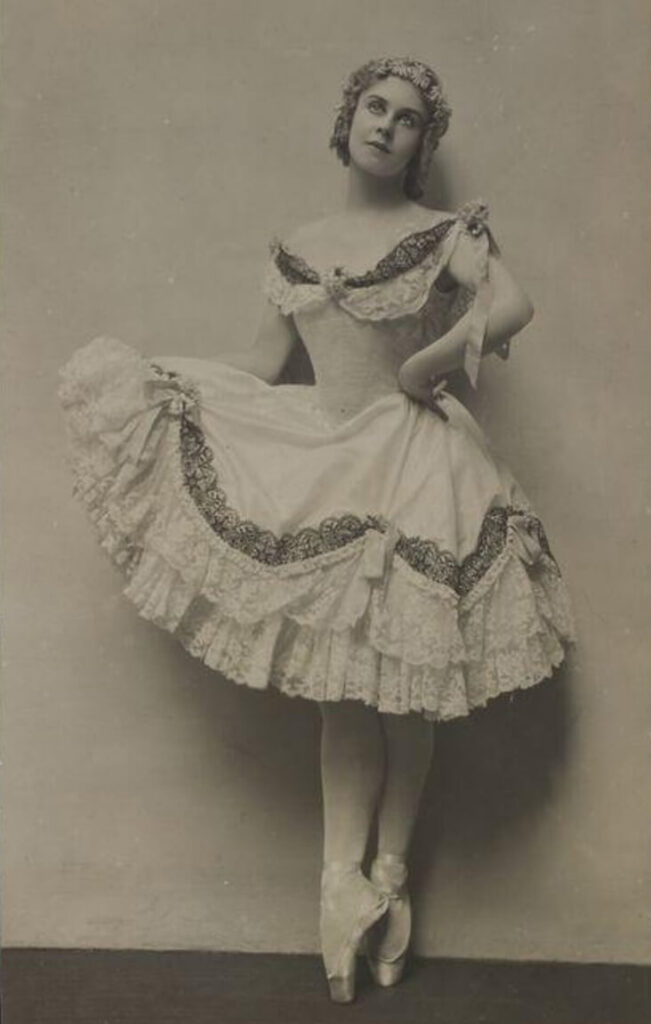
A photograph by E.O. Hoppe of the ballet dancer Lydia Lopokova starring as the can-can dancer in a costume designed by Andre Derain for the Ballets Russes production of La Boutique Fantastique (The Magic Toyshop), 1919, Victoria and Albert Museum, London
Andre Derain was the the great Fauvist painter who liberated colour, setting it free across his canvases with great swipes, streaks and slashes of unmixed paint. But there is another, less well-known side to Derain; from the 1920s to the 1950s he also turned his talents to the ballet, envisioning impossibly sumptuous sets and costumes in daring cuts, fabrics and colours that would bring the theatre ablaze with life. Like many leading artists of the era, Derain was first drawn into the ballet by the charismatic and ebullient Ballets Russes director Sergei Diaghilev, who persuaded Derain to dazzle and amaze theatre audiences with his brilliantly creative vision.
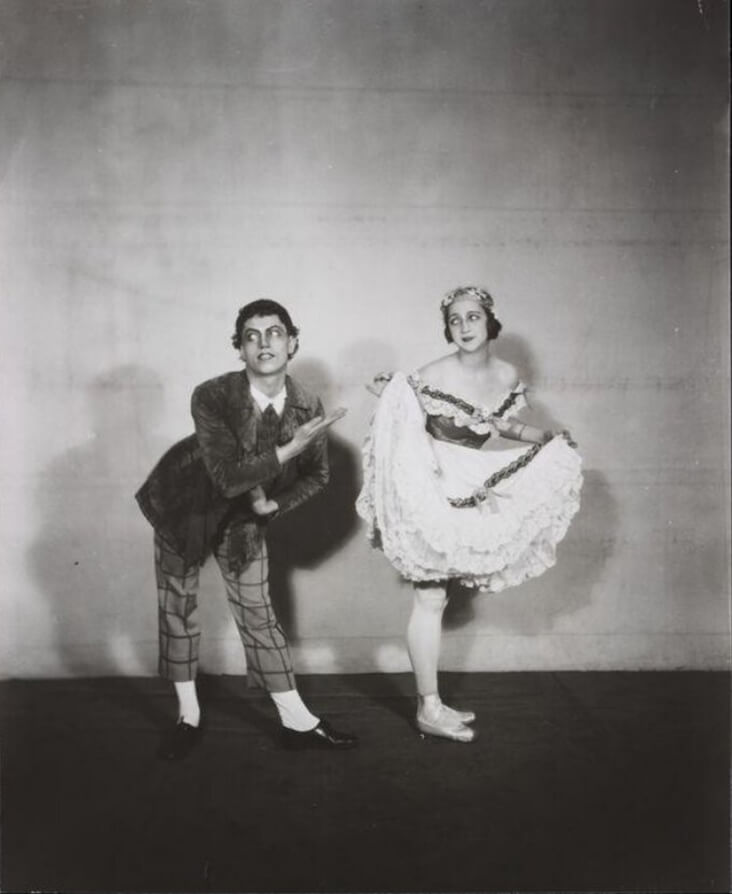
A photograph by Sasha of Serge Lifar as the shopkeeper and Alexandra Danilova as a can-can dancer in costumes designed by Andre Derain for the Ballets Russes production of La Boutique Fantastique (The Magic Toyshop), 1919, Victoria and Albert Museum, London
Diaghilev first began working with Derain in 1919, hiring him to work on the London production of La Boutique Fantasque (The Magic Toyshop), 1919. The one-act ballet took inspiration from the old German ballet Die Puppenfee (The Fairy Doll), 1897, where toys in a toyshop mysteriously come alive after dark. Alongside Derain, Diaghilev brought in choreographer Leonide Massine and composer Giacomo Rossini to rework the traditional story for a new audience, and the three worked closely together to align their ideas. Massine made two can-can dancers his principal characters, who fall in love and run away to get married. His complex choreography combined elements of folk dance, comedy and mime with classical ballet.
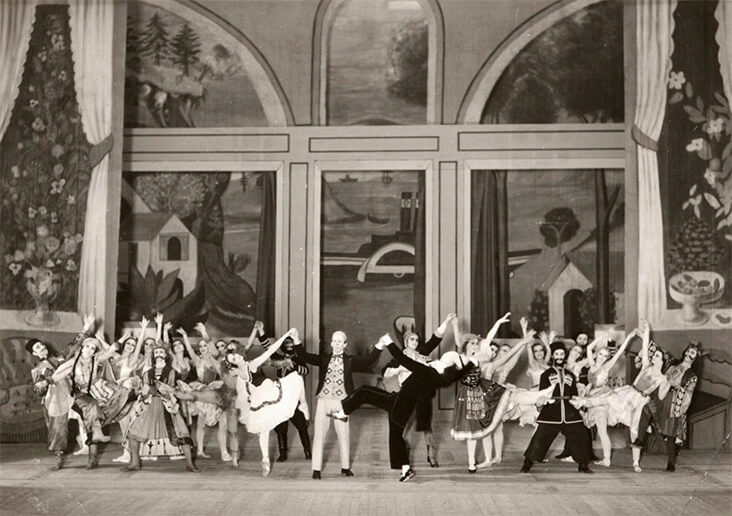
Andre Derain set design for the Ballets Russes production of La Boutique Fantastique (The Magic Toyshop), 1919
Derain’s costumes and sets were in keeping with this eclectic spirit of fun, with bold, hand-painted stripes on fabric and an interplay of varying textures including velvet, straw, lace and feathers. Set in France, Massine’s story featured characters of various nationalities, including French shopkeepers, English maids, an American family and Russian Merchants, along with the dancing toys. This presented quite a challenge for Derain, but many of his costumes were based on traditional Polish dress, with ruffled white cotton blouses, fitted bodices flaring into full skirts and tight waistcoats, all in rich shades of red, blue, green and gold.
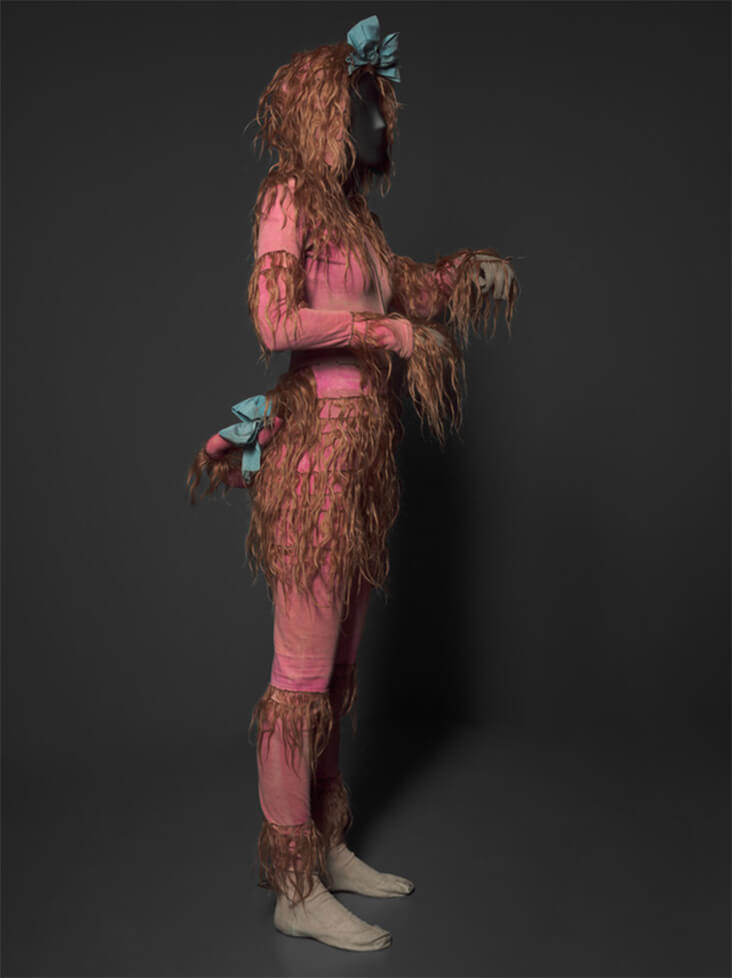
Andre Derain, costume design for the white poodle in the Ballets Russes production of La Boutique Fantastique (The Magic Toyshop), 1919, The National Gallery of Australia
First performed at the Alhambra in Leicester Square, London in 1919, the show was a huge hit, praised unanimously for its seamless blend of music, choreography and décor that conveyed the nonsensical nature of the story. The playful, comedic value of the story was in keeping with the post-war times, when there was a public desire for escapism and entertainment through the arts as an antidote to trauma. Derain was so taken with the entire experience of the ballet he declared, “I love life and I love the theatre, because it is life, another life.”
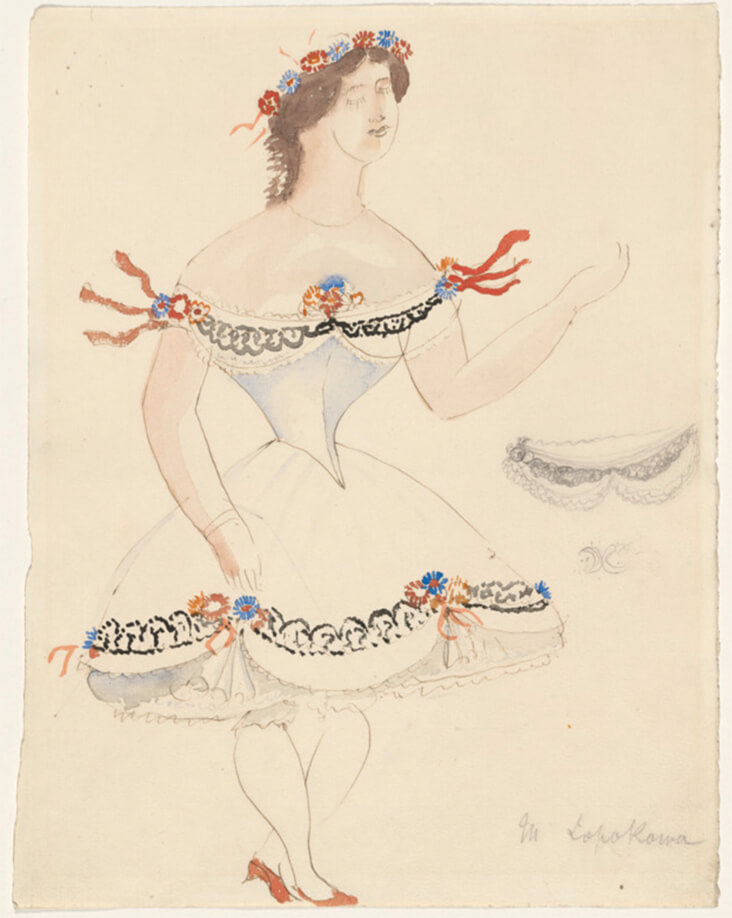
Andre Derain, costume design for the can-can dancer in the Ballets Russes production of La Boutique Fantastique (The Magic Toyshop), 1919, The National Gallery of Australia
In 1926 Derain returned to work with Diaghilev’s Ballets Russes on the Parisian production of Jack in the Box, another fantastical toy story with music by Eric Satie and the choreography of George Balachine. Satie had described the production as a pantomime-ballet, filled with “clownerie”, a mood Derain’s spirited costumes reflected with textured, three-dimensional polka-dot patterns, panels of brightly coloured stripes, puffy layered skirts and wild curly wigs. Sets were equally as striking, with large, blocky panels of bright colour offset with huge white clouds, conveying the experimental language of Derain’s paintings.
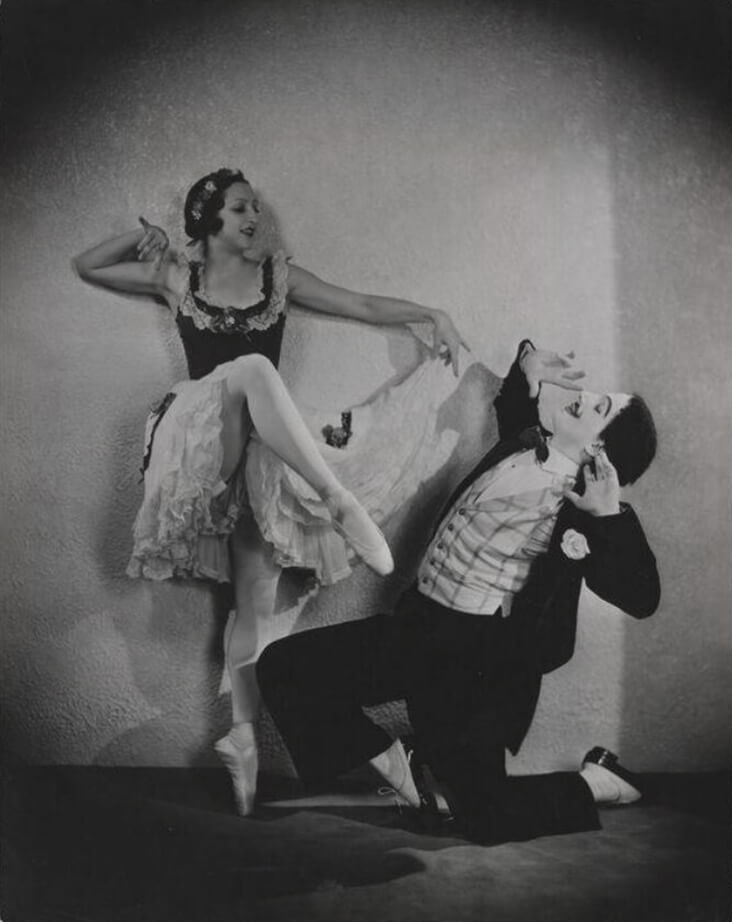
A photograph by Sasha of Serge Lifar as the shopkeeper and Alexandra Danilova as a can-can dancer in costumes designed by Andre Derain for the Ballets Russes production of La Boutique Fantastique (The Magic Toyshop), 1919, Victoria and Albert Museum, London
After Diaghilev’s death in 1929, Derain continued his love affair with the ballet for a further three decades, working on the ballet Concurrence, 1932 for the Ballets Russes de Monte Carlo, as well as George Balachines’s two ballets Fastes and Les Songes in 1933. He also designed sets and costumes for the Ballets Russes’ Monte Carlo production L’Epreuve d’Amour in 1936. The war forced Derain to take a break from the theatre, but he returned with great enthusiasm in the late 1940s and 1950s, designing for a series of ballet and opera productions including Mozart’s Il Seraglio, 1951 and Rossini’s Barber of Seville, 1952, both performed in Aix-en-Provence. Although he is better known today as a pioneering painter, Derain made an extraordinary contribution to the world of ballet and theatre design in his later years that deserves to be celebrated, one that was, like so many others, opened up through Sergei Diaghilev.





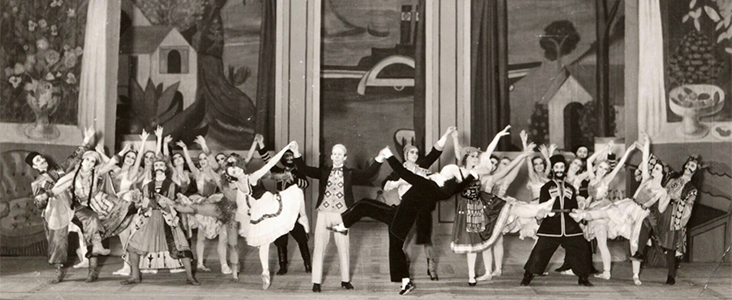






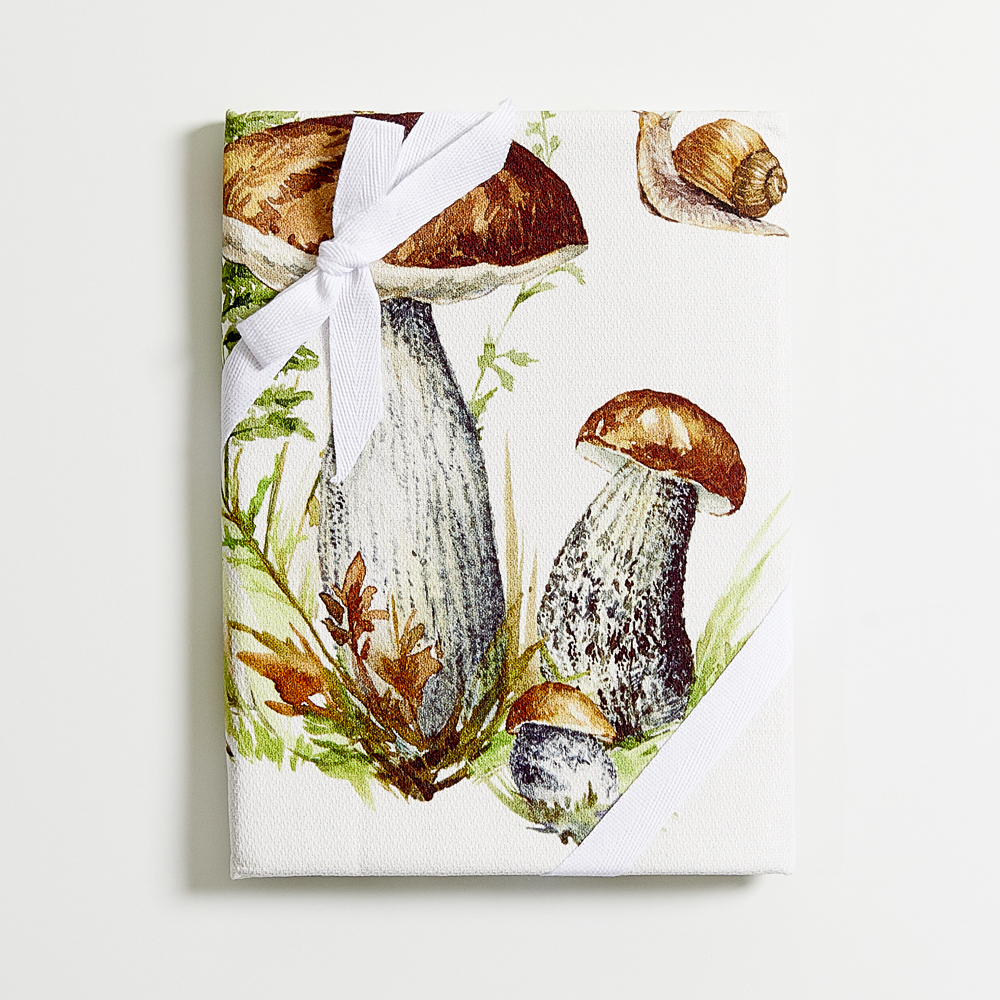













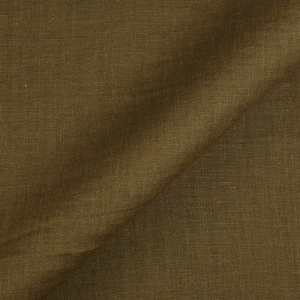














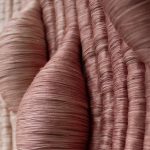

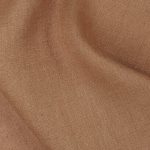

3 Comments
Nancy Collins
I love all the postings on fabrics-store.com, where detailed information about artists and the arts are given. I always read them. Especially enjoyed today’s email about Diaghilev & Derain and the Ballet Russes. Please continue with these posts — they are wonderful. I like the tie-ins with the various fabrics and colors. Thanks for the work you put into publishing these comments about artists and their work.
Vicki Lang
I agree. The stories about the costume designs are great for the ballets of the past are great, as are the ones about the great artists of the past. Please keep up the wonderful articles that you let us have insight to these great people of the past.
Rosie Lesso
Thank you both – so nice to hear!